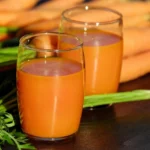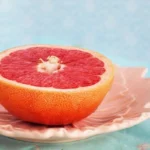Fatty liver disease is a growing health concern characterized by the accumulation of excess fat within liver cells. This condition arises when the body either produces too much fat or struggles to metabolize existing fat efficiently, leading to its storage in the liver.
According to Dr. Vu Truong Khanh, the Head of Gastroenterology at Tam Anh General Hospital in Hanoi, the disease can stem from a variety of causes. These include heavy alcohol consumption, various types of hepatitis infections, and underlying metabolic disorders such as type 2 diabetes. If left unaddressed and unmanaged, fatty liver disease has the potential to progress to more severe and life-threatening conditions, including hepatitis (inflammation of the liver), cirrhosis (scarring of the liver), or even liver cancer.
In its initial stages, fatty liver disease is frequently described as benign, meaning it does not typically cause severe impairment to liver function. This early diagnosis presents a crucial window of opportunity for effective management. With the implementation of proper medical treatment and significant lifestyle modifications, particularly in dietary habits, the condition can be effectively controlled and, in many cases, even reversed.
Dr. Khanh strongly emphasizes that diet plays an absolutely crucial role in both the treatment and prevention of fatty liver disease. Understanding which foods to limit or avoid is paramount for individuals seeking to protect their liver health and prevent the progression of this increasingly common condition. Below, we delve into four specific food groups that patients with fatty liver disease should carefully restrict in their daily intake.
1. Sugary Foods: A Direct Path to Liver Fat
High sugar intake is a significant contributor to liver fat accumulation, primarily through its effects on weight, insulin, and fat storage.
The Link Between Sugar, Weight, and Insulin Resistance
Excessive consumption of sugary foods is a well-established driver of several health issues that directly contribute to the development and progression of fatty liver disease. Firstly, high sugar intake is a primary factor in weight gain and obesity. When the body consumes more calories than it expends for energy, the surplus is stored. Sugars, particularly fructose, are rapidly metabolized by the liver, and when consumed in excess, they overwhelm the liver’s processing capacity. These excess calories that are not immediately used for energy are converted into triglycerides, a type of fat.
Crucially, when these triglycerides are not metabolized efficiently and instead accumulate, they directly contribute to fat accumulation in liver cells. This mechanism is a cornerstone of non-alcoholic fatty liver disease (NAFLD). Beyond weight gain, diets rich in sugar also critically promote insulin resistance.
Insulin is a hormone essential for regulating blood sugar levels; it helps glucose enter cells to be used for energy. When cells become resistant to insulin, it becomes “harder for glucose to enter cells,” leading to elevated blood sugar levels. In a compensatory response, the pancreas is forced to produce more insulin to try and lower these elevated blood sugar levels. Ironically, higher insulin levels further signal the body to increase fat buildup in the liver, creating a vicious cycle that exacerbates fatty liver disease.
High-Fructose Fruits and Sweet Treats to Limit
Given the detrimental effects of sugar on liver health and insulin sensitivity, individuals with high blood sugar or insulin resistance—and by extension, those with or at risk of fatty liver disease—should be particularly vigilant about their sugar intake. This means “avoiding sweets like candy, ice cream, and sugary desserts” is a fundamental dietary recommendation. These items are concentrated sources of simple sugars that can rapidly overwhelm the liver and contribute to fat synthesis.
However, the cautionary advice extends beyond obvious processed sweets. Even naturally occurring sugars in certain fruits, specifically those high in fructose, should be consumed in moderation. Dr. Khanh advises limiting high-fructose fruits such as lychees, apples, bananas, and grapes.
While fruits are generally healthy, excessive consumption of those particularly rich in fructose can contribute to the same liver fat accumulation issues seen with added sugars, especially in individuals predisposed to metabolic disorders. The key is moderation and choosing a variety of fruits, prioritizing those lower in fructose, to ensure overall nutritional balance without exacerbating liver fat.
2. Fried and High-Cholesterol Foods: Increasing Liver Strain
Foods high in unhealthy fats and cholesterol contribute to elevated lipid levels, placing significant stress on an already compromised liver.
The Impact on Triglycerides and LDL Cholesterol
Foods that are fried or inherently high in cholesterol pose a substantial risk to individuals with fatty liver disease. These include common dietary staples such as animal fat (e.g., from fatty cuts of meat), organ meats (e.g., liver, kidneys), red meat, egg yolks (in excessive quantities), butter, cheese, and highly processed meats like sausages and bacon. The primary concern with these food types is their ability to significantly “elevate blood triglyceride and LDL cholesterol levels.”
Triglycerides are a type of fat found in the blood, and high levels are a known risk factor for cardiovascular disease and, crucially, contribute directly to fat accumulation in the liver. LDL cholesterol, often referred to as “bad” cholesterol, contributes to plaque buildup in arteries, but also imposes a burden on liver processing.
When the liver is already struggling with excess fat, the additional influx of these unhealthy fats and cholesterol from the diet creates “added strain on the liver.” The liver is responsible for metabolizing fats, and an overload of dietary fat, especially saturated and trans fats found in fried and processed foods, can overwhelm its capacity. This leads to further fat deposition in the liver cells, exacerbating the condition and increasing the risk of inflammation and liver damage.
Healthier Alternatives: Plant-Based Fats and Omega-3s
To mitigate the harmful effects of fried and high-cholesterol foods, individuals with fatty liver disease should make conscious dietary substitutions. Instead of relying on animal fats or unhealthy cooking oils, patients should actively “use plant-based oils.” Healthy options include olive oil, avocado oil, and canola oil, which contain beneficial monounsaturated and polyunsaturated fats. These fats are easier for the liver to process and do not contribute to the same level of inflammatory stress as saturated and trans fats.
Furthermore, increasing the intake of “leafy greens” is highly recommended. Vegetables like spinach, kale, and collard greens are rich in antioxidants, vitamins, and fiber, which support liver detoxification and overall health without adding unhealthy fats. A crucial dietary change involves choosing “omega-3-rich fish like salmon, mackerel, sardines, and tuna.”
Omega-3 fatty acids are polyunsaturated fats known for their powerful anti-inflammatory properties and their ability to “help reduce liver fat.” Studies suggest that omega-3s can improve liver enzyme levels and decrease fat accumulation. By making these strategic dietary shifts, patients can actively work towards reducing the strain on their liver and promoting its recovery.
3. Canned and High-Sodium Foods: Inflammatory Triggers
Excessive sodium intake from processed and salty foods can significantly impact liver health, promoting fat deposits and inflammation.
The Link Between Sodium, Fat Deposits, and Insulin Resistance
Frequent consumption of salty foods, particularly those that are processed or preserved, poses a significant risk for individuals with fatty liver disease. This category includes items such as pickles, cured meats, fast food, and various canned items. The common denominator among these foods is their typically “excessive salt intake,” which has been directly linked to detrimental effects on liver health. High sodium levels in the diet can indirectly contribute to “increasing fat deposits in the liver” through several mechanisms.
Beyond direct fat accumulation, diets high in sodium may also “raise leptin levels.” Leptin is a hormone that helps regulate appetite and metabolism. Dysregulation of leptin can contribute to weight gain and metabolic dysfunction, both of which are risk factors for fatty liver. High sodium can also “cause fluid retention,” which can contribute to overall body weight and put strain on the circulatory system, indirectly affecting liver function.
More directly, excessive sodium intake has been associated with an “increase in body fat percentage” and a propensity to “promote insulin resistance”—a critical factor, as previously discussed, in the development and worsening of fatty liver disease. Over time, this chronic “salt overload can trigger liver inflammation and fibrosis,” where healthy liver tissue is replaced by scar tissue. This process accelerates the progression of fatty liver disease towards more severe stages like cirrhosis.
Light Seasoning and Daily Salt Limits
To mitigate the risks associated with high sodium intake, Dr. Khanh provides clear and practical dietary advice. He “advises families to keep meals lightly seasoned,” encouraging a mindful approach to adding salt during cooking and at the table. This simple change can significantly reduce overall sodium consumption.
Furthermore, a specific daily limit is recommended: individuals should “limit daily salt intake to under 6 grams.” This guideline aligns with general public health recommendations for sodium reduction to prevent hypertension and other cardiovascular issues, but it is particularly crucial for liver health. Achieving this limit requires careful attention to food labels, as many processed and packaged foods contain surprisingly high amounts of hidden sodium.
Opting for fresh, whole foods and using herbs, spices, and natural flavorings instead of excessive salt can help individuals manage their sodium intake effectively, thereby reducing the inflammatory burden on the liver and supporting its recovery.
4. Carbohydrate-Rich Foods: Managing Conversion to Fat
While not all carbohydrates are bad, excessive intake of refined carbohydrates can lead to their conversion into fat and subsequent liver accumulation.
Excess Carbohydrates and Liver Fat Conversion
Foods that are particularly rich in refined carbohydrates can pose a challenge for individuals with fatty liver disease. This category includes common dietary staples such as white rice, potatoes (especially processed forms like fries or chips), white bread, instant noodles, crackers, and rice cakes. The primary concern with these foods is their rapid digestion and absorption into the bloodstream as glucose. When the body consumes an “excess of carbohydrates,” particularly simple or refined ones that are quickly broken down, and these carbohydrates are not immediately used for energy, the liver steps in.
The liver’s role is to process this surplus. It converts these “excess carbohydrates into fat,” primarily triglycerides, through a process called de novo lipogenesis. When this process occurs frequently due to consistently high intake of refined carbohydrates, it can lead to a significant “accumulation of fat in the liver.” This mechanism contributes directly to the development and worsening of fatty liver disease, even in the absence of excessive fat intake from other sources.
The glycemic index of these foods is also high, leading to rapid spikes in blood sugar and insulin, further contributing to the cycle of fat storage in the liver.
Shifting to Whole Grains for Liver Health
To counteract the negative effects of refined carbohydrates, individuals with fatty liver disease are strongly advised to make strategic dietary shifts. The recommendation is to “switch to whole grains and brown rice” as primary carbohydrate sources. Unlike their refined counterparts, whole grains retain all parts of the grain kernel—the bran, germ, and endosperm—which means they are rich in fiber, vitamins, and minerals.
Making this switch offers multiple benefits crucial for managing fatty liver disease. Firstly, choosing whole grains significantly “increases fiber intake.” Dietary fiber slows down the digestion and absorption of carbohydrates, leading to more stable blood sugar levels and reduced insulin spikes. This helps prevent the liver from converting excess glucose into fat. Secondly, a diet rich in whole grains and fiber can naturally “reduce fat consumption” by promoting satiety and potentially displacing less healthy food choices.
Lastly, the anti-inflammatory properties of whole grains and their associated micronutrients can “lower inflammation,” a key factor in the progression of fatty liver disease. By embracing whole grains and brown rice, patients can actively manage their carbohydrate intake in a way that supports liver health, reduces fat accumulation, and mitigates inflammatory responses.
Holistic Dietary Approach for Liver Health
For individuals navigating fatty liver disease, dietary choices are paramount in managing the condition and preventing its progression. The expert advice from Dr. Vu Truong Khanh highlights four critical food categories to limit: sugary foods, fried and high-cholesterol items, canned and high-sodium products, and refined carbohydrates. Each of these groups contributes to fat accumulation, inflammation, or increased strain on the liver through distinct metabolic pathways.
By actively avoiding excessive sweets, opting for healthy plant-based fats and omega-3-rich fish over fried and high-cholesterol options, meticulously managing salt intake through lighter seasoning, and choosing whole grains over refined carbohydrates, patients can significantly support their liver’s recovery. This holistic dietary approach, combined with proper medical treatment, forms the cornerstone of effective management for fatty liver disease, empowering individuals to reclaim and maintain their liver health.








